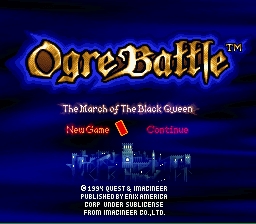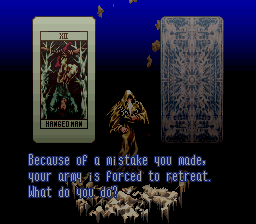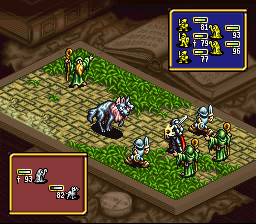Astrolabe 2: DemonWars, a marching Black Queen, and the All Stars of geek newsletters

Where social media is like a house party with a few billion invitees, running a newsletter is more of a one-way conversation with a bunch of friends you can’t see. The inspiration for Astrolabe came from many places, not the least of which are some of the fabulous geek/SFF/fandom newsletters I get every week in my inbox. So inviting some friends over feels like the perfect way to liven up the place.
As you’ll hear from DongWon Song in a moment, each issue feels like a personal connection between you and me—an opportunity to connect. I hope that by highlighting some of my favourite newsletters, you’ll find your favourite new voices to invite into your life.
So, grab a cup of whatever you’re drinking and meet my friends.
Here’s The Thing by Sarah Gailey
What can subscribers expect from Here's The Thing?
Right now, I'm running a series on personal canon in genre literature. I'm writing a few pieces, and I'm also bringing in guest contributors to talk about the books that made us who we are as readers, writers, and people. In general, subscribers can expect a combination of original fiction, personal essays, book recommendations, and a whoooole lot of recipes! For paying subscribers, I also run a weekly open thread. It's my favorite part of the Substack—the Friday Open Thread Gang is a cheerful, supportive, giving community, and our weekly chats are a genuine oasis in this increasingly overwhelming world.
What advice do you have for someone looking to start a newsletter?
The more you give, the more you get. It might seem counterintuitive—just a few years ago, the Going Advice was to avoid spamming peoples inboxes with too much content. But nowadays, I think people like the curated experience of a subscription more than the chaos of social media. When I send out a couple of items per week, my subscription numbers always go up; more free content and more paid content always seems to encourage participation!
Subscribe to Here’s The Thing
The Full Lid by Alasdair Stuart
What can subscribers expect from The Full Lid?
I call it my weekly download of pop culture enthusiasm. What that means is every week you get three stories covering any and everything from movies, books, games, music and TV to recipes. Also author and editor interviews and frequent longform essays. Recently those have included the way Streets of Rage 4 shows character and jeopardy through action. a look at the two very different recent TV versions of War of the Worlds, how to save The Expendables franchise from itself and I'm also still really fond of this piece, which is both why I both should not be allowed to write the Event Horizon TV show and how I would write the Event Horizon TV show.
In addition to that, I run 'interstitial' pieces between the stories. These can be anything from an artist spotlight (And I LOVE Z's work) to guest curated selections. The amazing Matt Wallace for example used the slot to provide a four film syllabus of monster hunting movies which will set anyone on the right path in that particular sub-genre.
Basically, it's a focused, information heavy look at the best pieces of pop culture I found in the last seven days. Like email, but good, is the tagline.
What role do newsletters play in community building?
There are two areas where they seem to be community hubs for me, The first is in it being a therapeutic exercise. This stuff is in my head anyway so getting it out helps and getting it out to an audience? That's validation and relief and fun for everyone all at once.
Secondly, especially in this absolutely hellish year it's very easy to feel alone and even easier to feel besieged. Newsletters are a postcard from our better natures.
Subscribe to The Full Lid
The Rec Center by Gavia Baker-Whitelaw and Elizabeth Minkel
What can subscribers expect from The Rec Center?
We’re both fandom journalists and longtime members of transformative fandom, and we created The Rec Center after a friend wondered if there were any newsletters with a digest of fandom-related material. We put out our first issue in January 2016, and we’ve continued every Friday since then. And this year, we were finalists for a Hugo Award for Best Fanzine!
We keep the format very consistent from week to week: we open with articles about fan culture or pop culture from a fannish lens, followed by a collection of our favorite fandomy stuff from around the web (including fanart, with the artist’s permission to repost), and we conclude with a fanfiction rec list, sometimes around a single fandom or ship, sometimes around a theme or trope. We have an extremely engaged readership, and they’re directly involved in the fic recs: dozens of readers have done guest lists and explainers about their favorite fandom or ship, and we’ve received more than a thousand individual fic recs through a form at the bottom of the newsletter.
We’d highly recommend the newsletter for anyone interested in transformative fandom, even if they aren’t fanfiction readers or writers (though maybe after a few issues, they will be!).
How do newsletters like The Rec Center fit into the evolving fanworks community?
Ten or fifteen years ago, people posted fanfic all over the place, but there were more centralized recommendation/review blogs on sites like Livejournal. Now it's the opposite: the vast majority of fic is posted on a couple of big sites like AO3 and Wattpad, but recs are a lot harder to find because fans are spread out over Twitter and Tumblr. We offer multifandom recs and news for people who are often more into “fandom” as a community and a concept, rather than participating in just one specific fandom.
Subscribe to The Rec Center
Publishing Is Hard by DongWon Song
What can subscribers expect from Publishing Is Hard?
Publishing is Hard is an irregular newsletter that reflects on my experiences in publishing. It ranges from my thoughts on the challenges faced in the process of selling books and working with writers to bits of craft analysis to discussions of how other media helps inform the books we love. It's not an advice letter or something that's meant to help you get an agent or sell more books. It's intended as insight into the life of an agent, a peek behind the curtain into the issues I think about and daily trials and tribulations I contend with.
Why have we seen such increased interest in newsletters over the past few years?
Newsletters are an incredible way to connect with readers. It's personal and intimate in a way that a blog never could be. It shows up in your inbox, a little letter from a creator to you, the reader. It formalizes the relationship between author and audience, but in a way that feels inviting and comforting. As we're seeing the collapse of ad-funded content across the internet, it also reveals how a small audience can sustain a creator in a way that millions of readers never could. A few bucks from a few thousand people can quickly lead to a sustainable income in the way that building a website on fractions of a penny per click was simply failing to do. Newsletters and other direct subscription services are providing a way for creators to connect with their readers in ever more powerful ways while earning a more sustainable income, provided you have that core audience that will show up and pay for your work.
Subscribe to Publishing Is Hard
Genre Grapevine by Jason Sanford
What can subscribers expect from Genre Grapevine?
I provide original reporting plus news and information related to the SF/F writing and publishing communities. When I first began writing fiction, one of my frustrations was discovering how much vital information about genre writing and publishing could only be found through the so-called "whisper network." If you knew the right people in the genre or attended the right conventions, you could learn which publishing companies to avoid, which editors harassed people, and which authors had troubling reputations. But if you were outside this whisper network, this vital information was unavailable.
I've worked as a professional journalist for many years, so I decided to use those skills to report on genre issues which many people may not otherwise hear about.
How has writing Genre Grapevine changed your perspective of the SFF community?
Would you believe my column has made me see the SF/F community in a better light? Yes, I frequently write about and cover negative aspects of the genre, such as publishers taking advantage of writers or authors harassing people. But reporting on all this has also allowed me to speak to so many amazing people. There are an astounding number of excellent SF/F writers and creatives and fans these days, people who are changing the genre in new and exciting ways. I am so looking forward to seeing where the SF/F genre goes in the coming years.
Subscribe to Genre Grapevine
Out & About
(Out & About is where I highlight my work around the web—some recent and some old favourites.)
“Explore The DemonWars Saga, One of the Most Underrated Fantasies Ever” on The Portalist takes a look at one of my favourite underrated epic fantasies of all time: The DemonWars Saga by R.A. Salvatore. This series holds a dear place in my own personal SFF canon, and the fourth book in the series remains one of the most emotionally wrenching reading experiences I’ve ever had.
DemonWars is a sprawling epic fantasy with a magic system that Brandon Sanderson fans will love, a huge world, intricate politicking, and characters you quickly fall in love with.
Salvatore recently released the concluding volume in the latest trilogy set in the world, Song of the Risen God, making this the perfect time to explore the series' history. It's also an ideal time for new fans to jump on board with one of the most under-the-radar epic fantasy series out there.
Read “Explore The DemonWars Saga, One of the Most Underrated Fantasies Ever” on The Portalist
Some more:
- Twitter: How Magic: The Gathering Got Me Into Fantasy
- Exploring Suikoden’s heart and the excitement for Eiyuden Chronicle: Hundred Heroes (Insert Cartridge)
- The Modern Nostalgia of Dragon Quest XI: A Conversation (Nerds of a Feather)
LTTP—Ogre Battle: The March of the Black Queen (Super Nintendo, 1993)
( LTTP stands for “Late to the Party” and is a regular column where I let Twitter decide which retro game I’ll play for an hour. Do your worst, Twitter!)
Cruising to victory more easily than the ‘84-85 Edmonton Oilers, classic Super Nintendo strategy RPG Ogre Battle: The March of the Black Queen took this issue’s LTTP poll with a whopping 72% over Alundra and Marvelous.

(All Ogre Battle screenshots courtesy VGMuseum.com)
I used to rent this game a lot as a kid and enjoyed it despite not knowing what the heck was going on. I’ve never actually sat down to give it a fair shake, though, so this opportunity to play it with an eye for game design and, um, strategy, has been an eye opener.

The game begins with a wizard named Warren asking a bunch of questions about ethical leadership decisions. I don’t know how these affect the game, but I generally chose answers that focused on personal accountability as a leader. This is an interesting way to get the player to immediately think about their leadership style, and how it might apply to the gameplay. Are you a vengeful conquering leader? Or a more benevolent leader seeking alliances with the cities you encounter? I know the Ogre Battle series uses morality as a gameplay mechanic, and though it seems very opaque in this first entry in the series, I do like how it’s unavoidable up front.

The majority of the gameplay uses a combination of RTS unit movement over an impressive faux-3D map decorated with mountains and water, towns, road, forests, and all the expected decorations on fantasy map, coupled with an encounter system similar to Japanese RPGs of the time. Touch an enemy token on the map, and your unit will be whisked into battle on a separate screen. Unlike many other strategy RPGs, the player has little control over their units during these battles, and instead must rely on strategically balancing the unit ahead of time by combining up to five combatants—from mages named Buster to Amazons named Sue and Molly—and use positioning, terrain, and movement to create favourable matchups against the enemy.

As I mentioned last issue, I love diorama-style graphics and Ogre Battle’s encounters are gorgeous. I love the way their placement on a tabletop surrounded by books implies a historic recording of a battle out of history—which lines up nicely with the way the combat plays out automatically. Ogre Battle offers very little handholding, and by the second scenario I had access to a ton of pre-built units but very little understanding with what to do once they hit the battlefield. It’s clear from its earliest moments that Ogre Battle rewards experimentation and multiple play throughs.
Ogre Battle: The March of the Black Queen was initially released on the Super Nintendo in 1993, with Sony PlayStation and Sega Saturn re-releases in 1995 and 1996 respectively. Its final American release at the time of this writing was on the Wii Virtual Console in March, 2009.
Quest Markers
(Quest Markers is a collection of the coolest stuff I’ve seen around the web lately.)
- The Queer Potentiality of Suikoden by Charles Payseur (Insert Cartridge)
- Twitter: Lily Wachowski on trans allegory in The Matrix
- Meet Michelle Nkamankeng—the 11 year old from South Africa who’s already written nine books (Bloomberg)
- YouTube: YouTuber walks around Shibuya like it’s a video game (Source: 駒沢アイソレーション]
- SFWA is looking for non-fiction pitches and you don’t have to be a member to submit (SFWA)
- Kickstarter: Uncanny Magazine Year 7: Space Unicorns Shine On Together!
- Diana M. Pho Announces the #Edits4BlackSFF Project, Which Offers Free Editorial Services to Black Speculative Writers (Tor.com)
End Step
Well, this was a juicy issue. Several times while drafting, Substack warned me that I was reaching my email size limit, so I had to snip a few things here and there! Catch those in the next issue.
Let me know what you thought, and please do subscribe to the folk I chatted with above. They’re the best of the best in genre/geek newsletters!
Support
There are lots of ways to support Astrolabe and my other work. Check ‘em out!
- Patreon: http://patreon.com/adribbleofink
- Ko-fi: http://ko-fi.com/aidanmoher
- Paypal: http://paypal.me/AidanMoher
Credits
Astrolabe banner photo by Shot by Cerqueira on Unsplash

